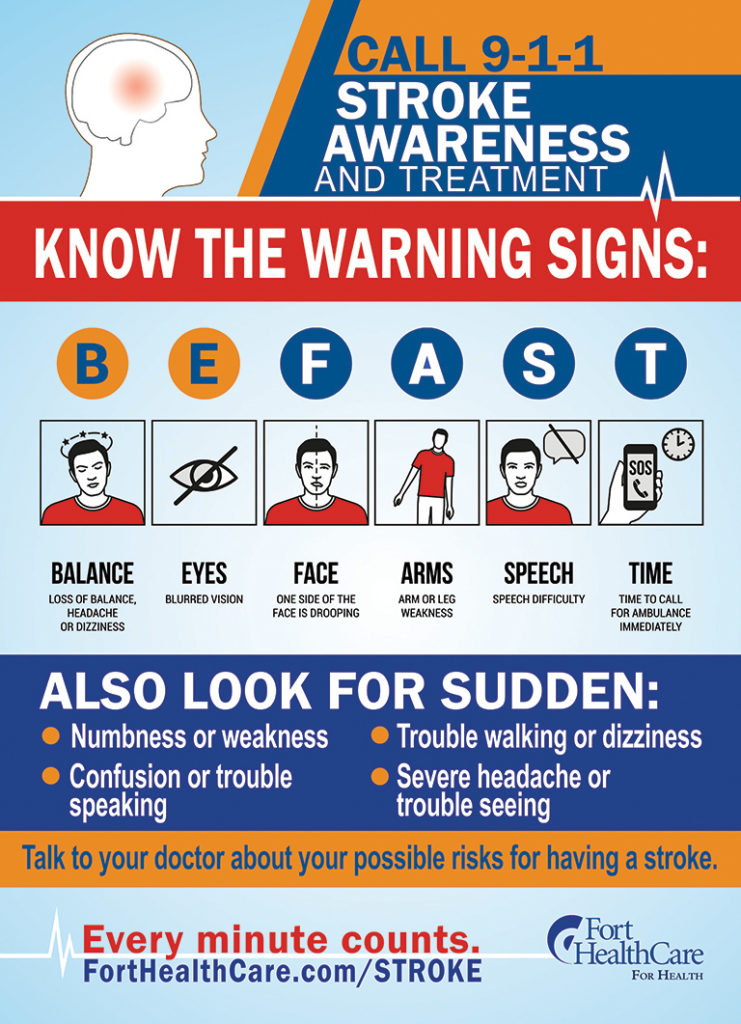May 18, 2018
Do You Know the Signs of a Stroke?

When it comes to spotting the signs of stroke, seconds count. In fact, speedy stroke treatment can sometimes prevent serious, long-lasting damage that affects your ability to move, speak or think. Immediate stroke treatment could even save your life.
What are the symptoms of a stroke?
A stroke occurs when blood flow to a specific area of your brain is cut off or blocked. To help you identify the signs of stroke and know when to call 911, the American Heart Association and the American Stroke Association developed an acronym — FAST — which stands for:
- F – Face drooping. If one side of your face is drooping or feels numb, it could be a sign of stroke. If you are unsure, try smiling and see if your smile looks crooked or uneven.
- A – Arm weakness. Weakness or numbness in one of your arms is a common stroke symptom. If you are unsure, try raising both arms and see if one is hard to hold up or feels weaker than the other.
- S – Speech difficulty. If you are slurring your speech, hard to understand or unable to speak, you could be having a stroke. If you are unsure, try to say a simple sentence correctly and clearly.
- T – Time to call 911. If you or a loved one experience any of these symptoms, don’t wait — dial 911 right away. To make sure you get the right treatment as soon as possible, be sure to tell the 911 operator that you think it could be a stroke. You should also note the time when you first experienced symptoms so your treatment team can provide the best care for you.
Stroke symptoms usually come on suddenly, but in some cases, symptoms are mild at first and worsen over a few hours. Mild stroke symptoms also can appear and go away. In other cases, stroke symptoms may be barely noticeable. If someone shows any stroke symptoms at all — and even if you are unsure—it is still important to dial 911 right away.
Are there any other symptoms of a stroke?
Although FAST symptoms are the most common, other stroke symptoms include:
- Confusion
- Difficulty understanding speech
- Numbness or weakness, especially on one side of the body, that affects the face, arm or leg.
- Trouble seeing in one or both eyes
- Trouble walking
- Coordination problems
- Dizziness
- Loss of balance
- Severe headache
Knowing the symptoms of a stroke can help you to get the treatment you need when you need it most.
